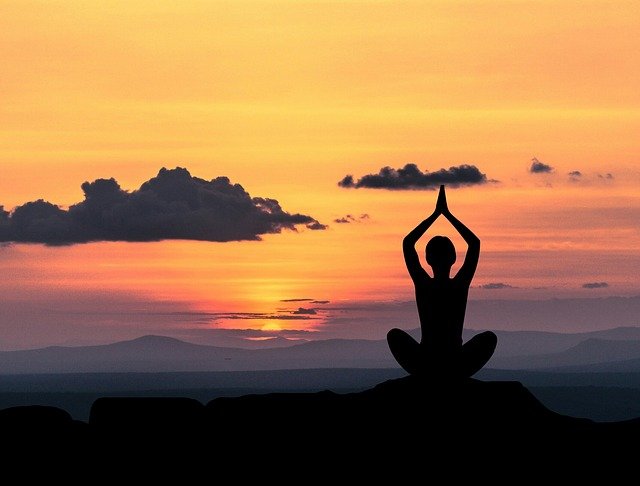
The Buddha taught not taking things personally and developing skillfulness is the key to resilience. Making changes requires some effort, as we all know, but we are not hapless pawns in a deterministic nightmare either. The Buddha taught exactly how this works and how to develop skill to maneuver graciously through whatever situation we find ourselves in. This new level of awareness is mastery.
Modern science has confirmed that human beings do not, on their own, possess free will. Most people go about reacting from evolutionary impulses, reacting to their environment based on perceived threats, survival, propagation of the species and so on. Well, mostly. The thing is that human beings can also learn and develop skill from observing input and responding to it. There was a study on free will in 2016 published in Proceedings of the National Academy of Sciences . The study pitted subjects against a computer “brain” to see if the computer could predict their next moves based on EEG readouts of their brain activity. The interesting results showed that the subjects could, up to a certain point, “veto” previous decisions even after the brain appeared to go through the process of preparing to make a move. However, there is a point of no return that once reached the person will not be able to exert will and make a different move. Of course, once that process has run it’s course, there is always room for change. That’s where the work comes in and where Buddhist teachings really shine.
Skillful action starts in the mind. The efforts of the mind are: perception, attention and intention. Intention is the part of the process that will begin to generate new results. A new action carried out with the intention of skillfulness will bear fruit sweeter and more in alignment with creating enlightened solutions. There is a process for this and this is what the Buddha taught.

When Lightning Strikes it’s Not Personal
In Monday’s essay Buddhist Wisdom: When Lightning Strikes It’s Not Personal I began exploring the truth about how when events occur or it appears that something is happening to us or someone is doing something to me it is actually that a complex system of events has brought that even in that moment in time to occur and I likened this to a storm system and the events that happen in a storm. It’s not personal if you get struck by lightning as a result of a storm system, as well, it’s not personal when someone does something that you appear to be on the receiving end of. In Buddhism this is known as dependent co-arising a truth that things happen based on conditions that when this happens/that happens. This is the basis of the Four Noble Truths and skillfulness is also implicated in the third and fourth noble truths – that there is a way out of suffering and that the Noble Eightfold Path shows the way.
This is not a faith thing. This is not a belief system. This is a system of action based on real, observable results. We take this up personally as an experiment. When we achieve the result that was promised and what others have achieved then we believe. Once we experience it then we understand that it is actually not a personal endeavor but the implications have far reaching consequences and the truths extend beyond the personal, limited concept of me and mine. This takes time and practice. An inspiring and motivating factor in all this is that there is a definite way out of the cycle of suffering, it is reproducible and it follows a system of rational logic.
The Elements of Skillful Action

.
The next deciding factor in the mind is the intention that motivates it at any given time. Simply being motivated by the intention of greater skillfulness we will achieve different results than acts motivated by intentions of delusion, greed or aversion. Intention is then influenced by quality of attention in its appropriateness or inappropriateness. What this means is we develop a clear and open way of acting our attention onto our circumstances. Breaking this down in this way I hope you can begin to feel the subtle way we co-create the circumstances that occur moment to moment. The more alert we become through developing our capacity for clear attention the less we will be susceptible to delusions. Thus, the more we will begin to perceive our circumstances with appropriate attention and see clearly.

.
So, the teaching goes, beneath all of this is the fact that this cycle is in contact with consciousness. This grouping of perceptions, feelings, characteristics and objects formed the basis for the Buddha’s doctrine of interdependent co-arising (attention, intention, feeling, perception, and contact with consciousness). In these are called Buddhism khandas. In my essays on the Five Buddha Families these different Buddhas in different colors and others distinguishing factors correspond to neutralizing the effects of identifying with any of the five khandas resulting in the erroneous belief in a static self or quantifiable "me".
Skandhas (Sanskrit) or khandhas (Pāḷi) means "heaps, aggregates, collections, groupings".[1] In Buddhism, it refers to the five aggregates concept that asserts five factors constitute and completely explain a sentient being’s mental and physical existence[2][3][4]. The five aggregates or heaps are: form (or matter or body) (rupa), sensations (or feelings, received from form) (vedana), perceptions (samjna), mental activity or formations (sankhara), and consciousness (vijnana).[5][6][7]
The skandhas refute the idea of a "being or individual", and complements the anatta doctrine of Buddhism which asserts that all things and beings are without self.[3][8][9] The anatta and "five aggregates" doctrines are part of the liberating knowledge in Buddhism, wherein one realizes that the "being" is merely made up of a temporary grouping of five aggregates, each of which are "not I, and not myself", and each of the skandha is empty, without substance.[10][11]
In the Theravada tradition, suffering arises when one identifies with or clings to the aggregates. This suffering is extinguished by relinquishing attachments to aggregates. The Mahayana tradition asserts that the nature of all aggregates is intrinsically empty of independent existence. The use of the skandhas concept to explain the self is unique to Buddhism among major Indian religions. It contrasts with the premise of Hinduism and Jainism that a living being has an eternal soul or metaphysical self. ~Wikipedia

Conclusion
In the process of perceiving and responding we can begin to end the cycle of reacting on auto-pilot based on past conditioning, beliefs, identifying with any one of the five khandas, or taking things personally in any way with the story of this happened to me, my and I. We now realize our existence is a combination of the five aggregates, or khandas, and that we do not exist without these in concert with each other and not a separate, unique “I’ or “self” which can never be found through the process of observation because it does not exist. Through the quality of choosing how to utilize our attention to appropriate perceptions along with the intention of responding skillfully we can begin to generate new feelings and events. This generates a positive feedback loop. Throughout all of this we can begin to drop the story of the little me in our heads understand that it is created out interdependent co-arising conditions that were created out of ignorance and delusional perceptions. We can begin to create a new reality not by positive thinking but by cultivating wisdom utilizing the aforementioned process. So, while we are not born with free will we can learn a skill. I hope you join me on Friday where we go deeper into more specific methods to achieve appropriate attention and skillful action.
What do you think?

@soulsistashakti is a musical artist and writer based in NYC as well as a practitioner of Buddhist teachings. You can check out my music on my FB artist page at https://www.facebook.com/soulsistashakti
Check out my blog for other essays on Buddhism and meditation
Recent posts
Buddhist Wisdom: When Lightning Strikes It’s Not Personal
The Buddha Was Just a Guy Who Got Woke – The Parable of Two Arrows
Buddhism: Hope for Trauma Survivors and Healing Modalities
Buddhism: Learning How to Drop Aversion and Be in Grace
Awaken Your Creativity/Writing With Morning Pages and Buddhist Mindfulness Practices
My First 10 Day Buddhist Samatha-Vipassana Meditation Retreat in NYC
Images pixabay.com
I love all this theory. The five impediments explained by Patañjali in their Yogasutras end up explaining this. I studied Patañjali a lot, not so much Budha so everything you share is wonderful for me! I love it because it reinforces that I am on the right path, my constant practices to avoid returning and return to past memories that distort my realities make me achieve less and less, that each time it becomes clear what I feel and what I see. Yoga is my number one tool, through this practice I have managed to understand how it worked and how to control my mind in most cases. And let it be clear, nothing is free, all this is based on permanent practice and there is always more to learn and grow. Thanks for such a deep and interesting post!
Yes, the skhandas are in yoga sutras. The practice of hatha yoga can only help! Yes, there are many parallels between yoga and Buddhism, the skandhas/khandhas being one. I studied kriya yoga for a few years in California. I'm not sure where the paths begin going in different directions but they are basically about the same thing I think, with a few differences.
And yes, practice is the only way, in my opinion. Even Eckhart Tolle studied and meditated with masters after his "opening" before he became a teacher.
I have found intention to be super important in my life as it sets the direction I want to go in, and then I know what skillful action to take. It seems that intention sets things in motion by itself sometimes too.
I love when that happens :) Yes, I do have a preference for serendipity :) lol
oooh ya, I love that word!
I really like the statement that we cannot control what is happening around us though we can control our reactions. And I believe that in order to achieve the conventional control on our reactions we should practice a lot and put efforts in the mentioned above techniques. Sooner or later our goal can be achieve and the main thing here not to loose mindfulness!